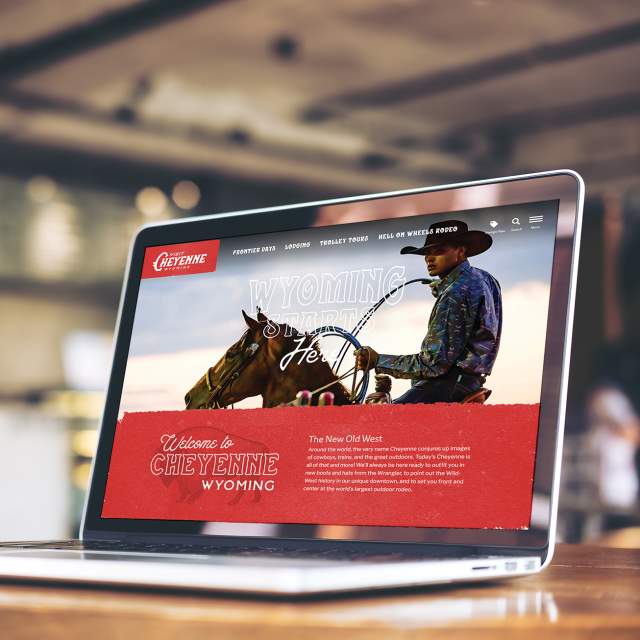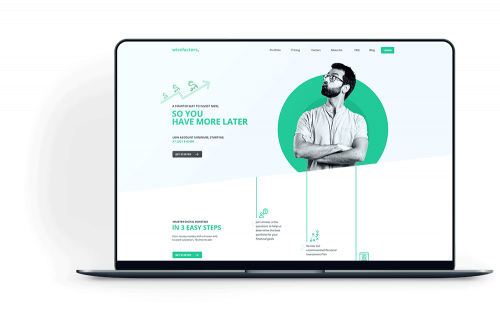Necessary Tips for Crafting High-Impact Web Site Layouts
In the realm of digital advertising and marketing, the style of a web site offers as an important touchpoint for engaging prospective customers. To create high-impact internet site styles, one should take into consideration important components such as audience understanding, user experience, and aesthetic hierarchy. Each of these parts plays an essential function in not only bring in visitors however additionally in promoting meaningful communications. Yet, the interaction between these elements can be nuanced and intricate, elevating the concern of exactly how to efficiently balance them to achieve optimal results. Exploring these techniques can bring about transformative outcomes for your on the internet existence.
Understand Your Target Market

To successfully recognize your audience, start by performing demographic analyses to collect information on age, sex, area, and interests - website design. This details works as a foundation for developing user personas, which represent the crucial attributes of your target audience. These personas guide decision-making in design components and content method, making certain placement with user expectations
Furthermore, assessing individual habits through tools like Google Analytics can disclose how visitors interact with your site. Metrics such as bounce prices and time on web page can highlight areas that need enhancement or adjustment. Customer surveys and responses likewise supply important understandings right into preferences and pain factors.
Ultimately, a deep understanding of your audience is not simply helpful yet important. It equips developers to develop even more appropriate, appealing, and useful internet sites that foster a favorable user experience and drive desired results.
Prioritize Individual Experience
When designing an internet site, focusing on customer experience (UX) is vital to attaining both user satisfaction and company objectives. A well-crafted UX ensures that visitors can browse the site easily, locate the info they require, and engage with material properly. To accomplish this, it is critical to take on a user-centered style technique that entails understanding user needs, choices, and habits.
Begin by conducting comprehensive study, including customer surveys and usability testing, to collect insights into just how users engage with your website. This information need to inform design decisions, making sure that attributes and formats line up with user assumptions. Streamlined navigation is vital; site visitors ought to have the ability to situate information rapidly without unnecessary clicks or confusion.
Additionally, think about the packing speed of your web site. A slow-loading website can lead to high bounce rates, negatively influencing individual experience. Maximize pictures and scripts to enhance performance.
Finally, ensure that your internet site comes to all users, including those with specials needs. Following ease of access criteria not just widens your audience however additionally fosters inclusivity. By prioritizing UX, you lay the structure for a successful internet site that fulfills both customer needs and company objectives.
Embrace Visual Hierarchy
A well-structured visual pecking order plays a significant role in enhancing user experience by directing visitors' focus to one of the most vital elements of a website (website design). By tactically organizing content, designers can produce a clear path for users to adhere to, ensuring they involve with necessary info efficiently
To execute aesthetic power structure, start by using size and range. Bigger aspects normally draw the eye, making them excellent for headlines or phones call to action. Enhance this with contrasting shades that highlight crucial areas, as dynamic tones can create centerpieces that catch attention.
Furthermore, the positioning of components on the page is critical. Leading the visitor's gaze with the format can be attained by positioning crucial information at the top or in the facility, where users generally begin their visual journey. Incorporating whitespace around aspects can also boost quality, making it simpler for individuals to refine info without feeling overwhelmed.
Lastly, utilizing typography efficiently adds to Source aesthetic hierarchy. Various font style styles, sizes, and weights can represent relevance, directing users through the web content seamlessly. By accepting these principles, designers can develop an user-friendly experience that fosters engagement and encourages individuals to check out further.
Optimize for Mobile
Mobile optimization is necessary in today's digital landscape, as a considerable part of internet traffic originates from mobile phones. To make sure a smooth individual experience, websites must be designed with mobile customers in mind. This entails employing responsive website design methods that adapt the layout, pictures, and text to fit different screen sizes while preserving performance and visual appeals.

Touch targets, such as switches and links, should be suitably sized, ensuring they are conveniently tappable without errors. Furthermore, make sure official statement that forms are mobile-friendly by minimizing input fields and using dropdowns where appropriate, enhancing the individual experience.
Finally, examination your web site throughout different mobile devices and web browsers to determine any kind of problems that may influence use. By prioritizing mobile optimization, you not only enhance individual satisfaction but likewise favorably affect your website's search engine position, thus bring in more site visitors and enhancing general engagement.
Implement Strong Branding
A well-defined brand name not just differentiates you from rivals but additionally fosters depend on and loyalty among your target market. This identity ought to be mirrored constantly throughout all electronic touchpoints, including your site, social media, and email interactions.
Visual elements such as logo designs, shade systems, and typography play an essential role in branding. Pick a color scheme that reverberates with your target market and reflects your brand name personality. Guarantee that your logo is flexible and prominently shown on your site, improving brand name recognition.
Material is equally vital; your intonation should line up with your brand identification, whether it's specialist, friendly, or authoritative. Involving narration can further reinforce your brand name, producing an emotional link with individuals.
Verdict
Finally, crafting high-impact site styles demands a diverse method that includes understanding the target market, prioritizing individual experience, and accepting aesthetic hierarchy. Optimization for smart phones continues to be imperative, together with the implementation of strong branding techniques. By integrating these elements, web sites can effectively engage users, assist in seamless navigating, and foster psychological connections web that improve brand identity. Inevitably, adherence to these concepts adds to the production of efficient and engaging digital experiences that reverberate with target market.
To produce high-impact website layouts, one have to consider important components such as target market understanding, user experience, and visual pecking order.When creating a website, focusing on user experience (UX) is vital to accomplishing both customer fulfillment and business objectives.Beginning by performing thorough research study, including individual surveys and functionality screening, to gather insights into how customers interact with your website. To make sure a seamless customer experience, websites must be created with mobile individuals in mind.In conclusion, crafting high-impact website layouts demands a multifaceted technique that encompasses understanding the audience, prioritizing customer experience, and accepting aesthetic power structure.
Comments on “Why Website Design is Crucial for Your Business Growth and Success”